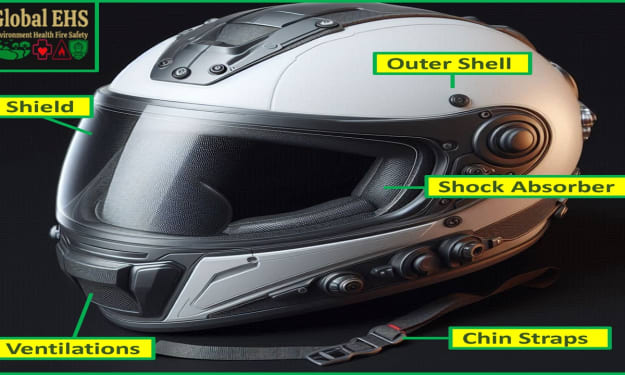How to Write an Essay
For some, writing an essay is as simple as sitting down at their computer and beginning to type. But a lot more planning goes into writing an essay successfully. If you have never written an essay before, or if you struggle with writing and want to improve your skills, it is a good idea to follow a number of important steps in the essay writing process outlined below

An essay is the most common form of writing style in one's academic career, starting in middle school all the way through high school, university and post-graduate degree, essays become inseparable to your education no matter which discipline you engage in and its importance heightened in one's research career. Furthermore, you may even need to write essays in the business world (although they are usually called reports at that point).
To understand how to write an essay, it is essential to start to understand what is an essay?
An essay is defined as a short piece of writing that expresses information as well as the writer's opinion. Learn how to write an essay using 8 simple steps.

For some, writing an essay is as simple as sitting down at their computer and beginning to type. But a lot more planning goes into writing an essay successfully. If you have never written an essay before, or if you struggle with writing and want to improve your skills, it is a good idea to follow a number of important steps in the essay writing process.
For example, to write an essay, you should generally:
While this sounds like a lot of steps to write a simple essay, if you follow them you will be able to write more successful, clear and cohesive essays. Below I outlined a step by step guide to follow when writing an essay.
1. Choose the Type of Essay
The first step to writing an essay is to define what type of essay you are writing. There are four main categories into which essays can be grouped:
- Narrative essay - Tell a story or impart information about your subject in a straightforward, orderly manner, like in a story.
- Persuasive essay - Convince the reader about some point of view.
- Expository essay - Explain to the reader how to perform a given process. You could, for example, write an expository essay with step-by-step instructions on how to make a peanut butter sandwich.
- Descriptive essay - Focus on the details of what is going on. For example, if you want to write a descriptive essay about your trip to the park, you would give great detail about what you experienced: how the grass felt beneath your feet, what the park benches looked like, and anything else the reader would need to feel as if he were there.
Knowing what kind of essay you are trying to write can help you decide on a topic and structure your essay in the best way possible. Here are a few other types of essays:
2. Brainstorm Your Topic
You cannot write an essay unless you have an idea of what to write about. Although we understand that most students already have an essay topic given by their teacher, to begin with, but we still want to mention here that if you do not have an essay topic, this step is highly important. Brainstorming is the process in which you come up with an essay topic. You need to simply sit and think of ideas during this phase.
- Write down everything that comes to mind as you can always narrow those topics down later.
- Use clustering or mind mapping to brainstorm and come up with an essay idea. This involves writing your topic or idea in the center of the paper and creating bubbles (clouds or clusters) of related ideas around it.
- Brainstorming can be a great way to develop a topic more deeply and to recognize connections between various facets of your topic.
- Once you have a list of possible topics, it's time to choose the best one that will answer the question posed for your essay. You want to choose a topic that is neither too broad nor too narrow.
If you are given the assignment to write a one-page essay, it would be far too much to write about "the world history.," since that could require hundreds of pages to comprehensively analyze these topics. Instead, you could write about a specific event within the history of the world dedicated to a specific country: perhaps signing the Declaration of Independence or when Columbus discovered the Americas. Therefore, narrow, narrow and narrow down your topic.
Choose the best topic idea from among your list and begin moving forward on writing your essay. But, before you move forward, take heed of these topics to avoid.

3. Research your Topic
Once you have done your brainstorming and chosen your topic, research is crucial to writing a good essay. Start your research with your school's library website as most educational institutions offer their students free access to scholarly articles or other academic resources.
After finishing your research, it is highly recommended to organize and record your research in a word document so it's not only easy for you to write your essay but also easy to refer back and do your citations.
4. Develop your Thesis
A thesis is the core of your essay, where you summarize your entire essay from main points to main arguments into one sentence. Our Writeo writing writers understand that this may seem terrifying for most students but it is nothing to be afraid of when you follow our proven structure for the thesis statement. Using this formula, the thesis is just as easy as plugin and write.
Thesis Formula: In this essay, 1)__________will be examined in accordance with 2)____________ to uncover 3)___________ through 4)_______, 5)_______ and 6)_________.
Now, let's look at each of these 6 components separately, using the topic "Can smoking be prevented by making Tobacco illegal?" as a demonstrating example:
- The Solution to examine that the question proposed: This is the main objective that your essay question is asking you to examine. In this case, it would be the illegality of Tobacco.
- The Main proof that you provide to support your argument: The supporting prove can be a scholarly journal or a research study or just a published statistic by an approved source. In this case, it would be in accordance with Burn's article.
- Your argument: This is what or which side you are arguing for. In this case, it would be to uncover why smoking cannot be preventing.
- Your supporting argument: This is one of the three sub-argument that you offer to support your points or in other words, this is the prove you give to convince your audience what you are saying is correct. In this case, the first supporting argument for this topic would be the increase Tobacco product in the black market.
- Your supporting argument: This is one of the three sub-argument that you offer to support your points or in other words, this is the prove you give to convince your audience what you are saying is correct. In this case, the second supporting argument for this topic would be the increased number of illegal activity surrounding purchasing and selling of tobacco products
- Your supporting argument: This is one of the three sub-argument that you offer to support your points or in other words, this is the prove you give to convince your audience what you are saying is correct. In this case, the third supporting argument for this topic would be the decreased government revenue.
5. Outline Your Essay
The next step is to outline what you are going to write about. This means you want to essentially draw the skeleton of your paper. Writing an outline can help to ensure your paper is logical, well organized and flows properly. If you’ve been tasked with an argumentative essay, here’s the best formula for an argumentative essay outline.
Start by writing the thesis statement at the top, then write a topic sentence for each paragraph below that. This means you should know exactly what each of your paragraphs is going to be about before you write them.
Don't jumble too many ideas in each paragraph or the reader may become confused.
Ensure you have transitions between paragraphs so the reader understands how the paper flows from one idea to the next.
Fill in supporting facts from your research under each paragraph. Make sure each paragraph ties back to your thesis and creates a cohesive, understandable essay.
7. Write the Essay
Once you have an outline, it’s time to start writing. Write based on the outline itself, fleshing out your basic skeleton to create a whole, cohesive and clear essay.
You’ll want to edit and re-read your essay, checking to make sure it sounds exactly the way you want it to. Here are some things to remember:
Revise for clarity, consistency and structure.
- Support your thesis adequately with the information in your paragraphs. Each paragraph should have its own topic sentence. This is the most important sentence in the paragraph that tells readers what the rest of the paragraph will be about.
- Make sure everything flows together. As you move through the essay, transition words will be paramount. Transition words are the glue that connects every paragraph together and prevents the essay from sounding disjointed. You can even use a list of transition words to help get you started.
- Reread your introduction and conclusion. Will the reader walk away knowing exactly what your paper was about?
Introduction: Start with a hook to grab the readers' attention, the hook could be an abstract concept concerning your topic's border context or it could be a famous quote, make sure the hook is eye-catching and often controversial where it could spark further discussion.
Body Paragraph: The body paragraph should start with a topic sentence that explains this paragraph's main argument and purpose, then, there should be a transition sentence that explains the topic sentence if your topic sentence requires further explanation. Next, introduce your evidence to prove your topic sentence in the form of quotation, when quoting a particular reference, it is important to always identify the source and summarize to provide context.
Conclusion: Just like the introduction and body paragraph, the conclusion is also extremely important to the success of your essay, our writers found that a lot of students do not pay enough attention to their conclusion and often just simply brush off the conclusion with one sentence. Just as your introduction acts as a bridge that transports your readers from their own lives into the “place” of your analysis, your conclusion can provide a bridge to help your readers make the transition back to their daily lives. Such a conclusion will help them see why all your analysis and information should matter to them after they put the paper down. First restate your thesis to review your main arguments provided within this essay, secondly, use one or two transitional sentences to expand your specific concept into the border context. For example, if you are talking about the 1867 confederation in Canadian history, your transitional sentence could highlight its importance in both Canadian and world history, but also you can connect this event to other historical events. Lastly, point to the border implication by offering potential further reading or areas of research that your readers can engage with if you want to learn more about your essay topic.
8. Check Spelling and Grammar
Now the essay is written, but you're not quite done. Reread what you've written, looking out for mistakes and typos.
- Revise for technical errors.
- Check for grammar, punctuation and spelling errors. You cannot always count on spell check to recognize every spelling error. Sometimes, you can spell a word incorrectly but your misspelling will also be a word, such as spelling "from" as "form."
- Another common area of concern is quotation marks. It’s important to cite your sources with accuracy and clarity. Follow these guidelines on how to use quotes in essays and speeches.
- You might also want to consider the difference between quoting, paraphrasing and summarizing. Quoting is reserved for lines of text that are identical to an original piece of writing. Paraphrasing is reserved for large sections of someone else’s writing that you want to convey in your own words. Summarizing puts the main points from someone else’s text into your own words.

About the Creator
WriteoWriting
Professional writing service tailored to your needs. Visit us on www.writeowriting.com for more details!
Enjoyed the story? Support the Creator.
Subscribe for free to receive all their stories in your feed. You could also pledge your support or give them a one-off tip, letting them know you appreciate their work.






Comments
There are no comments for this story
Be the first to respond and start the conversation.